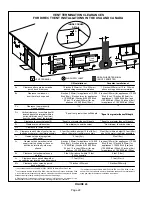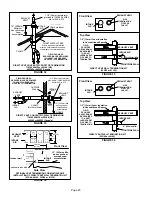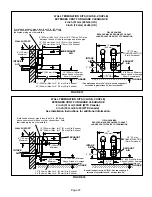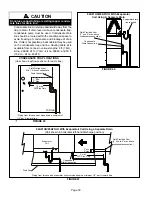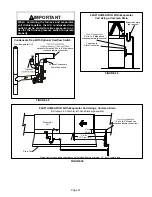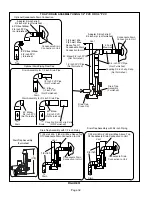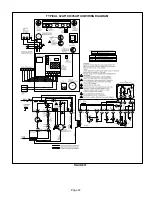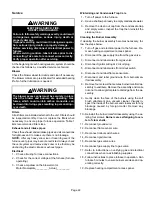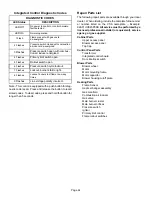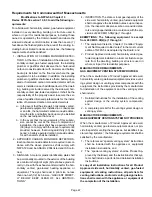
Page 36
INTERIOR MAKE−UP BOX INSTALLATION
FIGURE 56
MAKE−UP
BOX
Right Side
remove and relocate
plug to unused
opening on left side
The unit is equipped with a field make−up box. The make−
up box may be moved to the right side of the furnace to fa-
cilitate installation. Seal unused openings on left side with
plugs removed from right side. Secure the excess wire to
the existing harness to protect it from damage.
Refer to figure 57 for field wiring, schematic wiring diagram
and troubleshooting.
The power supply wiring must meet Class I restrictions.
Protected by either a fuse or circuit breaker, select circuit
protection and wire size according to unit nameplate.
NOTE −
Unit nameplate states maximum current draw.
Maximum Over−Current Protection allowed is 15 AMP.
Holes are on both sides of the furnace cabinet to facilitate
wiring.
Install a separate (properly sized) disconnect switch near
the furnace so that power can be turned off for servicing.
Before connecting the thermostat check to make sure the
wires will be long enough for servicing at a later date. Make
sure that thermostat wire is long enough to facilitate future
removal of blower for service.
Complete the wiring connections to the equipment. Use the
provided unit wiring diagram and the field wiring diagram
shown in figure 57. Use 18−gauge wire or larger that is suit-
able for Class II rating for thermostat connections.
Electrically ground the unit according to local codes or, in
the absence of local codes, according to the current Na-
tional Electric Code (ANSI/NFPA No. 70) for the USA and
current Canadian Electric Code part 1 (CSA standard
C22.1) for Canada. A green ground wire is provided in the
field make−up box.
NOTE − The 92AF1UH/95AF1UH furnace contains elec-
tronic components that are polarity sensitive. Make sure
that the furnace is wired correctly and is properly grounded.
Accessory Terminals
One line voltage EAC" 1/4" spade terminal is provided on
the furnace integrated control. See figure 58 for integrated
control configuration. This terminal is energized when the
indoor blower is operating. Any accessory rated up to one
amp can be connected to this terminal with the neutral leg
of the circuit being connected to one of the provided neutral
terminals. If an accessory rated at greater than one amp is
connected to this terminal, it is necessary to use an exter-
nal relay.
One line voltage HUM" 1/4" spade terminal is provided on
the furnace integrated control. See figure 58 for integrated
control configuration. This terminal is energized in the
heating mode when the combustion air inducer is operat-
ing. Any humidifier rated up to one amp can be connected
to this terminal with the neutral leg of the circuit being con-
nected to one of the provided neutral terminals. If a humidi-
fier rated at greater than one amp is connected to this termi-
nal, it is necessary to use an external relay relay.
Install the room thermostat according to the instruc-
tions provided with the thermostat. See figure 57 for
thermostat designations. If the furnace is being
matched with a heat pump, refer to the FM21 installa-
tion instruction or appropriate dual fuel thermostat in-
structions.
Indoor Blower Speeds
1 − When the thermostat is set to FAN ON," the indoor
blower will run continuously on the heating speed
when there is no cooling or heating demand.
2 − When the 92AF1UH/95AF1UH is running in the heat-
ing mode, the indoor blower will run on the heating
speed. The heat off delay is adjustable with a default
of 120 seconds.
3 − When there is a cooling demand, the indoor blower will
run on the cooling speed. The cool speed off delay is
60 seconds and not adjustable.
Generator Use − Voltage Requirements
The following requirements must be kept in mind when
specifying a generator for use with this equipment:
D
The furnace requires 120 volts + 10% (Range: 108
volts to 132 volts)
D
The furnace operates at 60 Hz + 5% (Range: 57 Hz to
63 Hz)
D
The furnace integrated control requires both polarity
and proper ground. Both polarity and proper grounding
should be checked before attempting to operate the
furnace on either permanent or temporary power
D
Generator should have a wave form distortion of less
than 5% THD (total harmonic distortion).

